California has over 6,000 wineries and 154 American Viticultural Areas (AVAs) that span the state from north to south. San Luis Obispo County, also known as SLO CAL, is situated in the heart of California’s Central Coast. The region is one of the most diverse wine areas, boasting over 250 wineries.
SLO County’s wine country stretches from Paso Robles, the largest American Viticultural Area (AVA) in the region, in the north to the coastal valleys near San Luis Obispo.
Paso Robles, a 35-minute drive from the city of San Luis Obispo, is inland with rolling hills and steep hillsides. The region experiences diurnal shifts and well-drained soils, allowing warm-climate grapes like Cabernet Sauvignon, Syrah, and Zinfandel to thrive.
Edna Valley and SLO Coast AVAs are located closer to the coast. Both AVAs enjoy a maritime climate that allows grapes like Chardonnay and Pinot Noir to flourish in the cooler temperatures.
I wanted to get a diverse representation of the SLO CAL region. Therefore, I selected four wineries throughout Paso Robles and the San Luis Obispo Wine Country. I also had some stylistic preferences: delicate, light to medium-bodied reds and minerality-forward wines with minimal oak influence. Further, I wanted a wine experience, not just a flight from one tasting to the next. My winery selections met my wishes.
Cass Winery
The magnificent grounds of Cass in Paso Robles, enveloped with flowers, trees, and shrubs, seem to go on forever. From private tastings to wine club events, an on-site inn for lodging, and daily lunches and dinners, everything is meticulous.
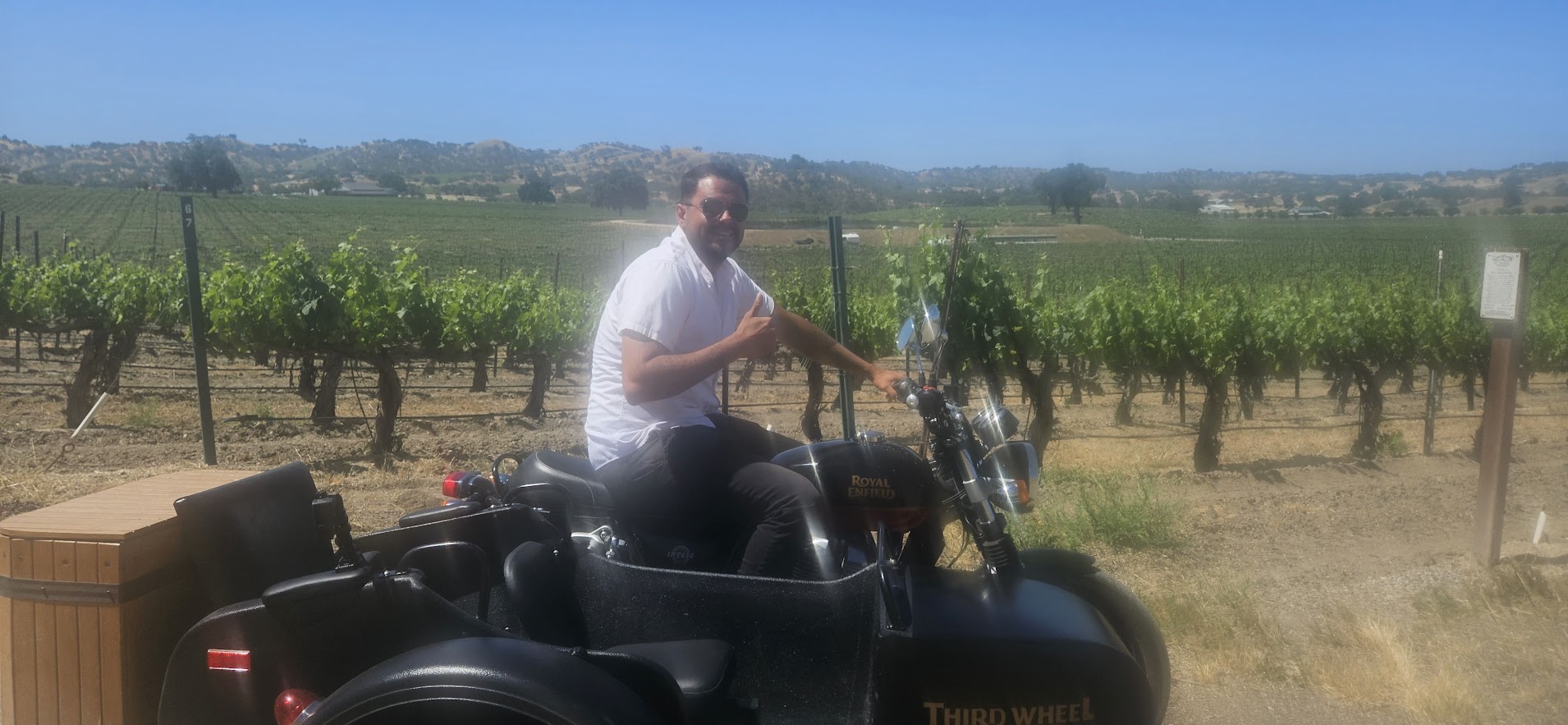
Going above and beyond what makes a memorable experience, the winery hosts Camp CASS. Camp includes wine blending and cooking classes, archery, ax-throwing (before wine tasting, of course!), horseback riding, and sidecar wine tours. The folks at Cass Winery take pride in connecting people through wine and the excursions they offer. Many friendships and relationships have developed on their property.
I was lucky to participate in a sidecar tour with one of their partners, Third Wheel Motorcycle Tours. The ride through the vineyard was not only entertaining but also educational. I gained insight into the vineyard’s practices and sustainability efforts at Cass. We stopped to admire a row of Marsanne, a white variety native to the Rhone Valley of France. The traditional blending grape not only thrives in their vineyard, but they also make it as a single varietal. This is not a standard practice.
The Wine at Cass Winery
Marketing and Event Manager Chanda Brown and I casually tasted a lineup of their Rhone-style wines. The Viognier’s fresh acidity and pretty fruit notes of mango and honeydew made for a delightful start. Their lovely Oasis Rose, made from Mourvèdre and Grenache, followed, featuring bright flavors of watermelon and tropical notes. The Rockin’ One Red, a blend of Grenache, Syrah, Mourvèdre, and Petite Sirah aged in Acacia Barrels, had beautiful earthy tones of forest floor and chalky minerality, with hints of wild berries and just-ripe red cherries.
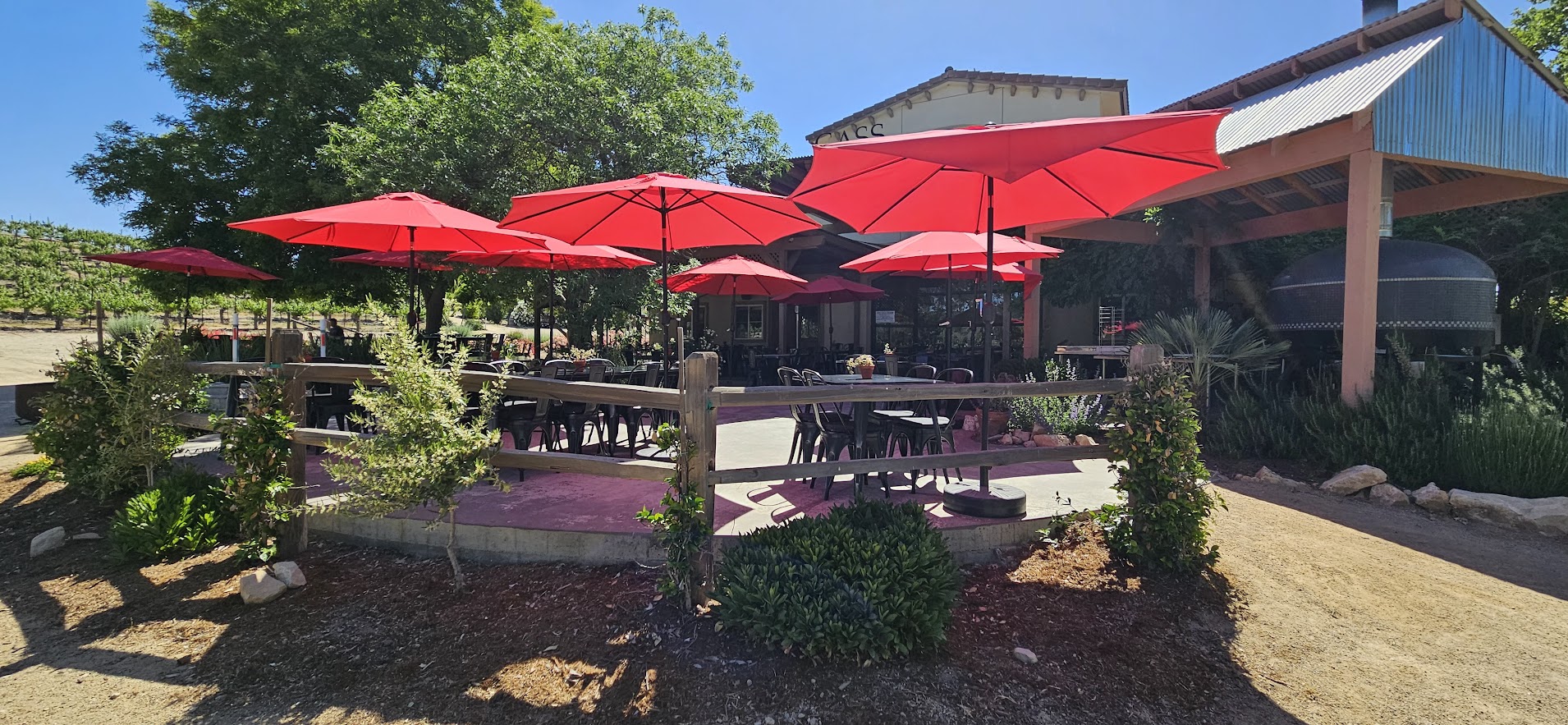
The cafe at Cass serves locally crafted appetizers, wood-fired pizzas, and delicious salads. For lunch, I had the Ahi Watermelon salad, which burst with fresh flavors. Chef Charlie, the man behind the creations, prepares the food for all the happenings on the property. A walk through the kitchen and my first bite of food was proof of the TLC that goes into each dish.
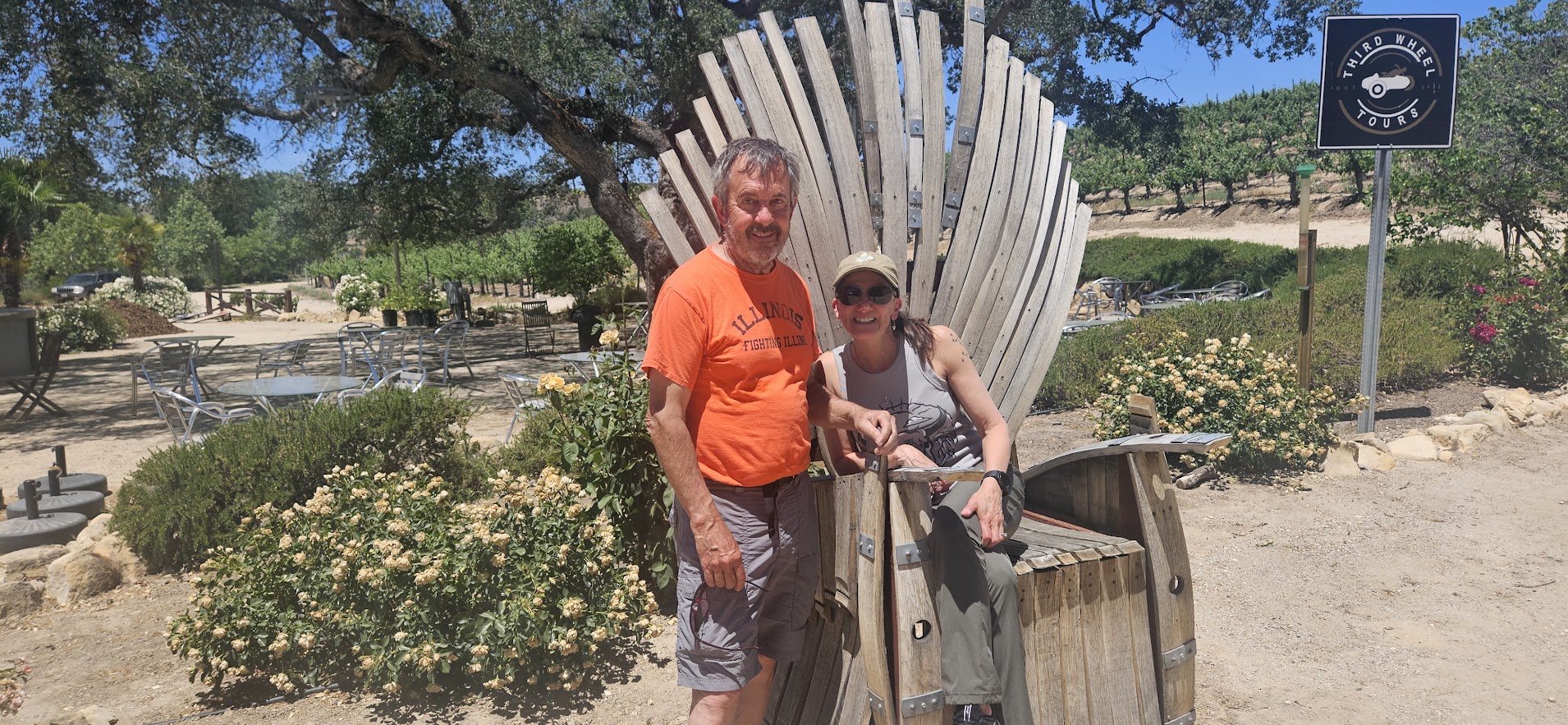
My lunch was elevated when owner Steve Cass joined us. Although my experience on the property was first-rate, his laid-back demeanor and unassuming manner were the most impressive part of my day.
Niner Wine Estates

Greeted with a chilled glass of Chardonnay, I felt warm and fuzzy from the second I arrived at Niner Wine Estates. The Heart Hill Vineyard, named after a huge oak grove in the shape of a heart on the property, is the first thing you see as you open the doors to the patio. The iconic heart is a staple that was shaped by the Booker Brothers in 1956, who lived on the land for nearly 100 years. No pruning is done, yet the heart continues to maintain its shape, quite remarkable.
The second-generation family-owned winery farms in two vineyards: Heart Hill Vineyard in the Willow Creek District of Paso Robles, where Bordeaux varieties thrive, and their coastal Jespersen Ranch in Eden Valley, where Rhone varieties, Pinot Noir, Chardonnay, and Albariño are the stars. Although somewhat close in proximity, the two sites have very different topographies; therefore, the winery employs two winemakers.
The Wine at Niner Wine Estates
One of the many attentive staff members at Niner, Dusty Middleton, personally chose a selection of their jewels for me to taste. We began with their 2020 Blanc de Noire Brut, made in the traditional method. The 100 percent Pinot Noir Sparkling displayed beautiful lees, notes of orange leaf, and lemon. Next up was the 2023 Pinot Noir, which presented notes of stemmy earth and enchanting spices, including black pepper and cinnamon.
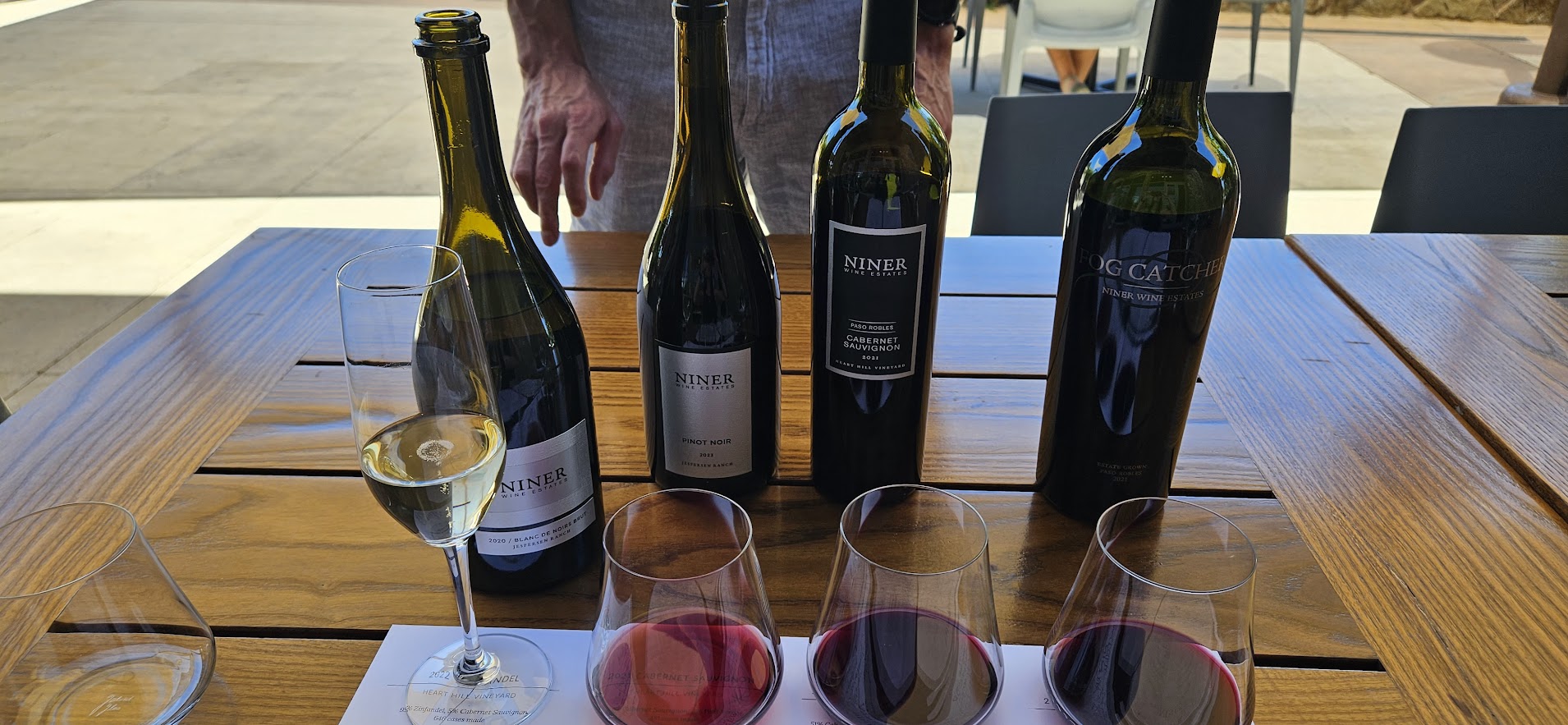
We brought it back to Heart Hill and tasted their marvelous Cabernet Sauvignon, which underwent extended maceration, resulting in a much softer style and a less rich wine. I am not a fan of overly oaked wine and feel deflated when Cabernets are masked by oak. In this wine, minerality was at the forefront, and I could tell Niner let the juice do its thing with limited oak influence.
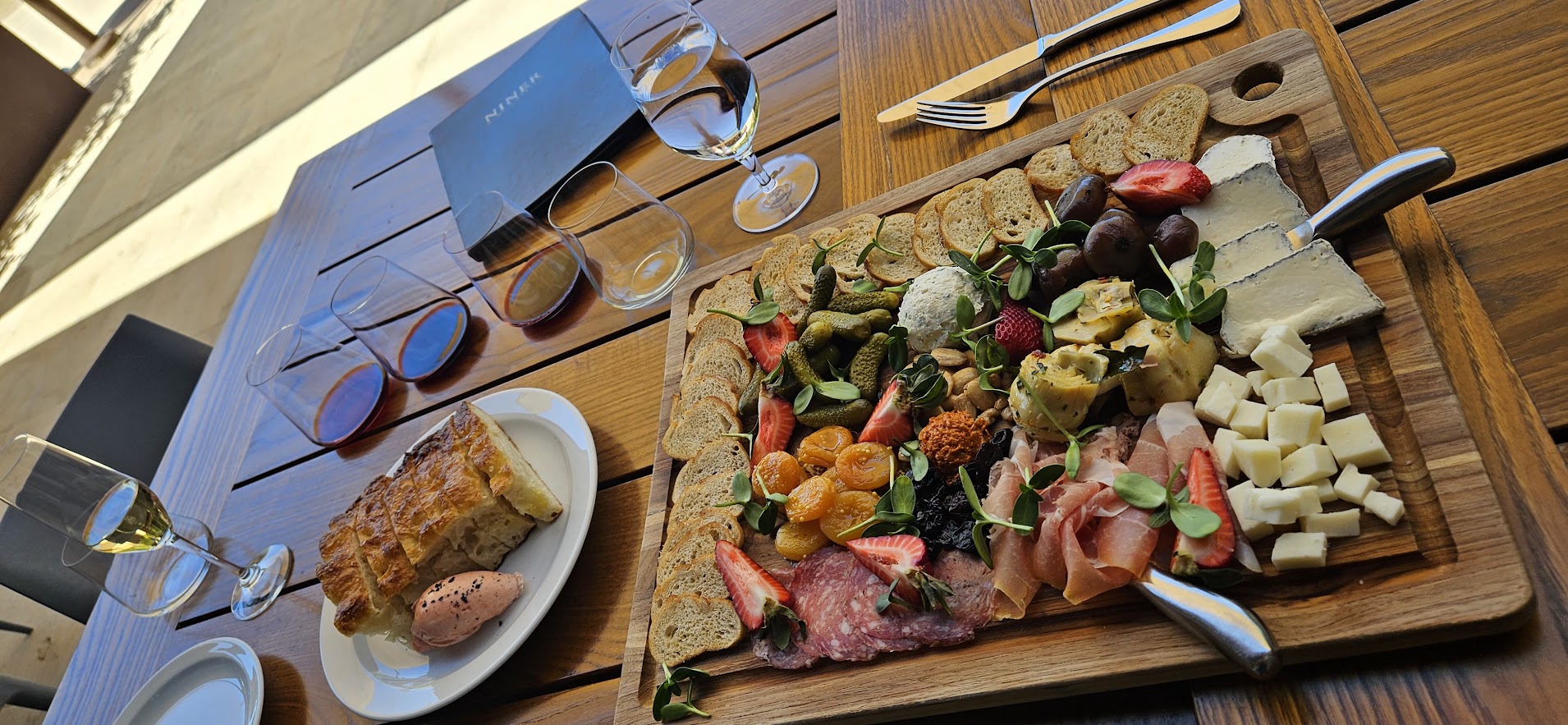
Lunch at Niner
Niner Wine Estates also offers a delectable menu of food for guests to enjoy while savoring their wine. Therefore, by popular vote, I ordered the focaccia bread with strawberry butter and the gigantic charcuterie board. During my lunch, I chatted with some of their wine club members who were in town from North Carolina; Niner is another winery that brings people together.
Owner Andy Niner took me on a walk around the grounds and gardens that the culinary team uses for the restaurant. He shared the history of the land and stories of his late father, who lived his vision for the vineyard and winery. Consequently, Andy continues to operate with this vision in mind while bringing innovative ideas to make the legacy proud.
Sinor-LaVallee

What a treat it was to taste in Sinor-LaVallee’s tasting room in Avila Beach. The aromas of the salty sea and the views of the blue waters made for a magical setting. The second-generation winery primarily produces Pinot Noir and Chardonnay. Their fruit is sourced from vineyards in the SLO Coast AVA, including the Demeter Biodynamically Certified Bassi Vineyard, which is 1.2 miles from the Pacific Ocean.
Owner Esmee Sinor creates a hip, relaxed vibe in her seaside tasting room. She, along with her father, Mike Sinor, and brother, Tomas, operate the winery and are making some of the best Pinot Noir in California.
The Wine at Sinor-LaValle’s
Inspired by Burgundy, France, Mike Sinor wanted to craft the varietal in the Burgundian style while remaining true to his winemaking approach. Over his 30-plus years in the industry, Mike has held nearly every wine gig a winery has to offer before earning SLO County Winemaker of the Year, acquiring his vineyard, winery, and label. He is admired for helping put Edna Valley, a sub-AVA of the SLO Coast AVA, on the map.
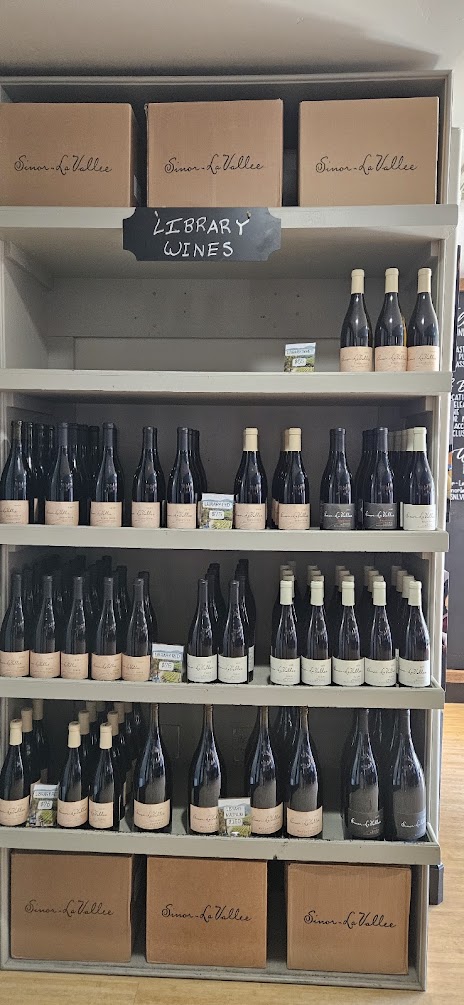
Esmee and I sat and tasted on the chill patio, surrounded by colorful chairs and oak barrel tables. The refreshing Pét-Nat (a sparkling wine where fermentation finishes in bottles, resulting in natural bubbles) of Pinot Noir was a welcoming introduction to Sinor-LaValle’s sophisticated style.
The 2023 Pinot Noir boasts a silky mouthfeel, with hints of gravel and crushed wet rock, complemented by delicate red berries and tart plums. Esmee graced me with the opportunity to taste their 2005 Pinot Noir from their library collection. It amazed me how the 20-year-old wine retained such gorgeous acidity and brilliant candied raspberry and cranberry flavors.
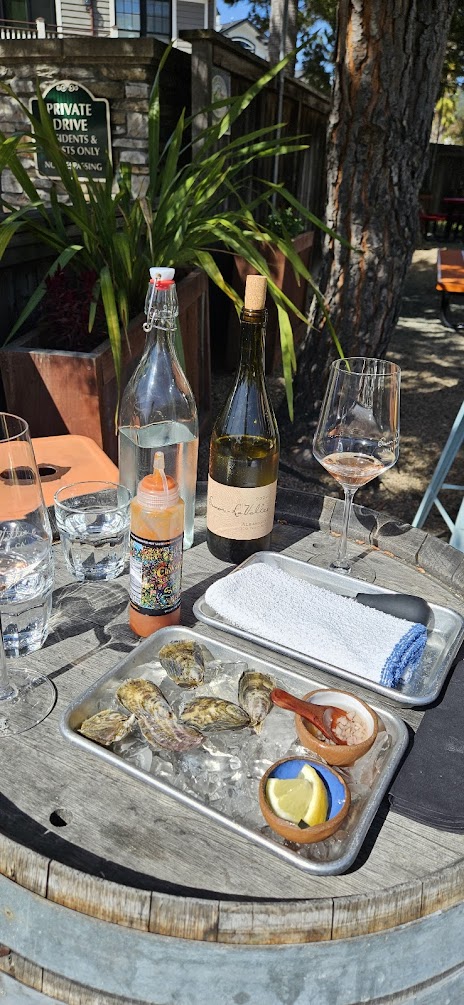
I highly recommend not leaving without experiencing the Shuck Shack. Esmee skillfully shucks Morro Bay’s highly sought oysters; watch before trying your hand at the risky mission. Managing to do so without stabbing myself was an accomplishment. We toasted our shells and slurped them down, paired with a crisp Albariño. The wine’s touch of salinity and rich notes of green apple and lemon zest were the perfect match.
Tolosa Winery, A SLO CAL Winery
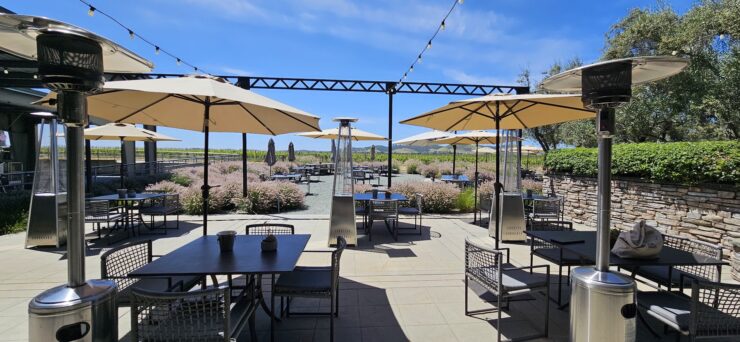
Tolosa Winery is named after Mission San Luis Obispo de Tolosa, the mission dedicated to Saint Louis, Bishop of Toulouse. Being one of the closest wineries to the airport, it is often a guest’s first or last stop. It makes a great first impression of Edna Valley.
The stunning landscape took my breath away. The patio offers a variety of sunny and shady spots to enjoy a peaceful afternoon of wine tasting. Tolosa is another Pinot Noir-dominant winery – I was excited to try it, as it is my favorite variety.
The Wine at Tolosa Winery
Estate Host Kim Schisler led an exceptional tasting adventure. She set me up with a charcuterie plate featuring cheese, nuts, chocolate, and a delicious mushroom pâté. Great tunes and an expressive Rose of Pinot Noir, with lean structure and herbaceous flavors, set the tone.
The 2021 Stone Lion Pinot Noir, crafted from five distinct clones, showcases soft tannins with layers of earthy complexity and a spicy finish. Tolosa also produces excellent Grenache. Their 2021 from the San Luis Obispo Coast delivered notes of pepper, fresh fennel, and licorice. Finally, we tasted the highly respected 2019 Primera, their flagship label. The Pinot Noir made from small blocks of land brought sensational complexity with hints of truffles and perfumed floral aromas. The Wine Advocate recognized it as one of the world’s top wines.

Tolosa houses a custom crush facility called Phase 2 Cellars. It is essential for many local wineries that lack the capacity at their locations. As you sit on the patio, you can view the enormous space filled with state-of-the-art equipment. And Schisler shared the palpable excitement that comes after harvest when truckloads line up with grapes waiting to be processed.

Wine club members can enjoy exclusive events and tastings in a special room just for them. With windows on all sides, the views of the Seven Sisters, a series of seven volcanic peaks, stand in all their glory. I hear this is the place to be during a good storm.
Conclusion
Would I have liked to explore more than four wineries? Yes, but my general rule is one to three visits per day to ensure a good representation of the place. True wine lovers take the time to get to know what they are tasting. And rushing from one to another is not the way to do that, especially if you want to see what else the region has to offer.
If you go to SLO CAL, you will also enjoy the phenomenal restaurant scene in downtown San Luis Obispo. The fabulous Downtown SLO Farmers’ Market is held every Thursday. Cerro San Luis Obispo Mountain is a five-minute drive away, offering numerous hiking trails. For ocean lovers, drive 15 minutes to Avila Beach, grab a kayak from Avila Beach Paddle Sports, and be on the water.
In Paso Robles, visit the historic square downtown, dine at one of the locally owned restaurants, and stay at the luxury boutique hotel, The Piccolo.
You Might Also Enjoy:
- The Elegant Alpine Wines of California Gold Rush Country
- Paso Robles Winemakers Are Thinking Outside the Bottle
For more of my travel recommendations, go to: www.aboutwineinaz.com

